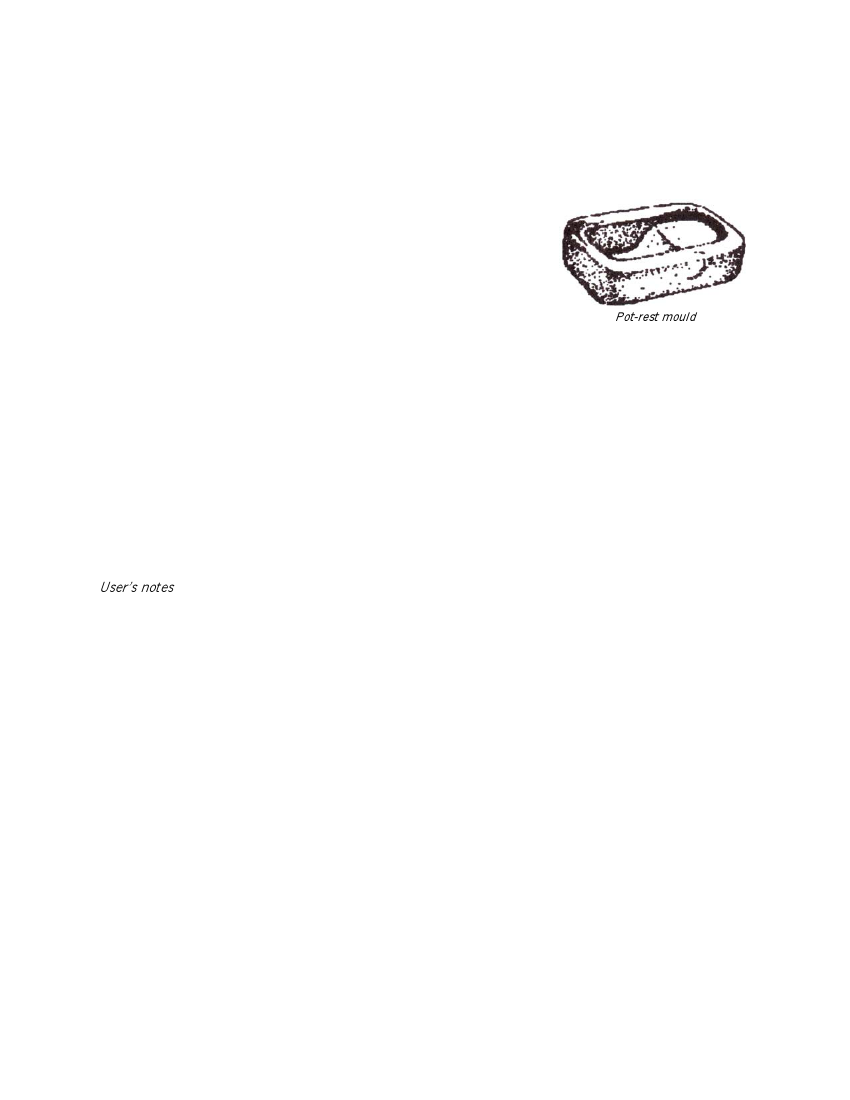
• To examine stove design and learn skills for ceramic stove construction
• To assist participants to understand and practise quality requirements for ceramic stove
production.
• To equip participants with skills for construction, finishing and firing of a range of ceramic stoves.
•
Materials and equipment required
Paddle moulds, pot-rest moulds, cutting mould, a table or work board,
clay soil and prepared clay, water, finished dried stoves, polythene
sheets, knife, cardboard, wooden boards, or sacking, plastic spatulas for
smoothing, piece of cloth or sponge, fine sieved ash.
Time; 3-4 hours, depending on the number of stove types
demonstrated. This should be followed by another activity to impart
skills in ceramic stove production.
Pot-rest mould
Content and procedure
• Identify indigenous pottery skills which can be utilized for ceramic stove production
• Discuss historical origin of ceramic stove production (successes and failures)
• Identify sources of materials such as clay (if possible in nearby location) and discuss appropriate
ratios
• Discuss the process of clay preparation, soil ratios and reasons for these
• Discuss moulding procedures for different stove types
Practical activity
• Clay identification and preparation
• Moulding and finishing different types of stoves
• Stove drying and firing
User’s notes
Ceramic stoves are made by potters using a mould to shape clay into the form of stove liners. These are
then dried, fired and either built into the kitchen or cladded with metal to make them portable. There are
different designs using either charcoal or firewood. There are many different aspects in the identification of
pottery clays, the preparation of the clay, making of the stove, and understanding the causes of, and
solutions to problems that may occur.
Though quite easy for a skilled potter, learning how to make ceramic stoves is a little difficult for lay
people. Experience will, however, help to solve problems in the production process.
Where there is good clay, there will usually be a history of pottery, and potters who know where to find the
clay sources and how to prepare it. If, however, there are no pottery activities, one will need to find a clay
source. Seek out local knowledge when doing this. After sources are identified, it is important to test the
clays. The best test is to take the clay through the whole process of moulding, drying and firing. Use some
of the test stoves for cooking to see if they are strong and will last.
The trainers should ensure that there are sufficient well dried stoves during the training to facilitate a
demonstration on the firing of the stoves.
(More information can be obtained from “How to Make and Upesi Stove – Guidelines for Small Businesses”
and “The Kenya Ceramic Jiko – A Manual for Stove Makers” by Hugh Allen).
28